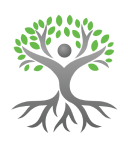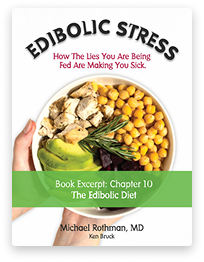Identifying the Silent Menace: Top Symptoms of Mold Sickness to Watch Out For
Are you experiencing mysterious health issues that seem to have no explanation? It might be time to consider the silent menace that could be lurking in your home: mold. Mold sickness is a serious condition that can have a profound impact on your well-being, yet many people remain unaware of the symptoms to watch out for. In this article, we will explore the top signs that could indicate you have mold-related health issues.
From persistent headaches and fatigue to respiratory problems and skin rashes, mold sickness can manifest in a multitude of ways. It’s essential to recognize these symptoms early on to prevent further health complications. By understanding the warning signs, you can take the necessary steps to identify and eliminate mold from your environment.
Join us as we delve into the topic of mold sickness and arm you with the knowledge to ensure a healthy living space. Don’t let mold silently jeopardize your health. Stay informed and empowered to protect yourself and your loved ones.
What is mold?
Mold is a type of fungus that thrives in warm, damp environments. It can grow on various surfaces, including walls, ceilings, carpets, and even furniture. Mold reproduces by releasing tiny spores into the air, which can easily be inhaled or come into contact with the skin. While some types of mold are harmless, others can produce toxins that can have adverse effects on human health.
Common symptoms of mold sickness
Mold sickness can present itself in a variety of symptoms, and it’s important to be aware of the common signs that could indicate a mold-related health issue. The symptoms can vary from person to person, depending on factors such as the type of mold, the duration of exposure, and individual susceptibility. Here are some of the most prevalent symptoms to watch out for:
Respiratory symptoms of mold sickness
One of the most common ways mold affects the body is through respiratory symptoms. If you notice persistent coughing, wheezing, or difficulty breathing, it could be a sign that mold is present in your environment. Mold spores can irritate the respiratory system, leading to inflammation and breathing difficulties. If you have a pre-existing respiratory condition, such as asthma, exposure to mold can exacerbate your symptoms.
In addition to coughing and wheezing, mold can also cause nasal congestion, sinusitis, and a runny or stuffy nose. If you frequently experience these symptoms, especially when you’re indoors or in certain areas of your home, it’s worth investigating for mold growth.
Skin symptoms of mold sickness
Mold can also have a visible impact on the skin. If you notice unexplained rashes, itchiness, or redness, it could be a sign of mold sickness. Direct contact with mold or its spores can trigger an allergic reaction on the skin, leading to various skin issues. These can range from mild irritation to more severe conditions such as dermatitis or hives.
It’s important to note that not everyone will develop skin symptoms when exposed to mold. However, if you notice recurring skin problems that seem to have no apparent cause, it’s worth considering the possibility of mold as a contributing factor.
Neurological symptoms of mold sickness
In some cases, mold exposure can affect the neurological system, leading to a range of symptoms that can be quite debilitating. These symptoms can include headaches, dizziness, difficulty concentrating, memory problems, and even mood swings. If you find yourself experiencing these issues without a clear explanation, mold could be a potential culprit.
The exact mechanism of how mold affects the brain and nervous system is still not fully understood. However, studies have shown that exposure to certain types of mold can produce neurotoxins that can have a direct impact on cognitive function and overall mental well-being.
Respiratory symptoms of mold sickness
While respiratory, skin, and neurological symptoms are the most commonly reported signs of mold sickness, there are other symptoms that can also indicate a mold-related health issue. These symptoms can vary from person to person and may include:
– Fatigue and weakness
– Eye irritation or redness
– Sore throat
– Muscle aches and joint pain
– Digestive problems such as nausea or diarrhea
– Sensitivity to light and sound
If you experience any of these symptoms and suspect mold as a possible cause, it’s important to consult with a healthcare professional for a proper diagnosis and treatment plan.
Skin symptoms of mold sickness
Identifying mold in your home is crucial for addressing the issue and ensuring a healthy living environment. Here are some steps you can take to identify the presence of mold:
1. Visual inspection: Look for visible signs of mold, such as black or green patches on walls, ceilings, or other surfaces. Pay attention to areas that are prone to dampness, such as bathrooms, basements, and kitchens.
2. Musty odor: Mold often has a distinct musty smell. If you notice an unpleasant odor in certain areas of your home, it could be a sign of hidden mold growth.
3. Water damage: Mold thrives in moist environments, so areas with water damage or leaks are prime locations for mold growth. Inspect any areas that have experienced water damage, such as near pipes, under sinks, or around windows.
4. Professional inspection: If you suspect mold but are unable to find any visible signs, it may be necessary to hire a professional mold inspector. They have the expertise and tools to detect hidden mold and assess the extent of the problem.
Neurological symptoms of mold sickness
Preventing mold growth in your home is essential for maintaining a healthy living space. Here are some preventive measures you can take:
– Keep humidity levels in check: Use dehumidifiers or air conditioners to keep humidity below 50%. This will help prevent the growth of mold.
– Fix leaks promptly: Repair any leaks or water damage as soon as possible to prevent mold from thriving.
– Improve ventilation: Ensure proper airflow in your home by opening windows, using exhaust fans, and keeping air vents clean.
– Use mold-resistant products: When renovating or building, choose mold-resistant materials such as drywall and paint.
– Clean and dry after water incidents: If you experience a water spill or flooding, clean and dry the affected area within 24-48 hours to prevent mold growth.
If you suspect mold-related health issues, it’s crucial to seek medical attention. A healthcare professional can diagnose mold sickness and recommend appropriate treatment options, which may include medications, allergy shots, or lifestyle changes to reduce exposure.
Other symptoms of mold sickness
Mold sickness is a silent menace that can have a significant impact on your health and well-being. By being aware of the symptoms and taking proactive steps to identify and eliminate mold from your environment, you can protect yourself and your loved ones from the adverse effects of mold exposure. Remember, prevention is key, and early intervention can help mitigate the risks associated with mold sickness. Stay informed, stay vigilant, and prioritize a healthy living space free from mold.
How to identify mold in your home
In addition to persistent headaches and fatigue, mold sickness can cause a range of other symptoms that may seem unrelated at first. These symptoms can vary from person to person, depending on individual sensitivities and the type of mold present. Here are some of the other common symptoms associated with mold sickness:
1. Respiratory Issues: Mold spores are known to irritate the respiratory system, leading to symptoms such as coughing, wheezing, and shortness of breath. If you find yourself frequently experiencing these respiratory problems, especially when indoors or in specific areas of your home, mold could be the culprit.
2. Nasal Congestion: Mold can trigger nasal congestion, causing a stuffy or runny nose that persists even when you’re not suffering from a cold or allergies. This symptom is often accompanied by sneezing and itching sensations in the nasal passages.
3. Allergic Reactions: Mold can trigger allergic reactions in some individuals, leading to symptoms like itchy and watery eyes, sneezing, and skin irritation. If you notice these symptoms worsening when you’re at home or in specific rooms, it’s worth investigating for mold presence.
4. Digestive Problems: Some people may experience digestive issues, such as nausea, diarrhea, and abdominal pain, as a result of mold exposure. These symptoms can be particularly concerning if they occur after being in certain areas of your home or consuming food that may have been contaminated by mold.
5. Neurological Symptoms: Mold sickness can also affect the nervous system, leading to symptoms like difficulty concentrating, memory problems, and mood swings. If you notice a decline in cognitive function or changes in your mental health, it’s important to consider mold as a possible cause.
Prevention and treatment of mold sickness
Identifying mold in your home is crucial for effectively addressing the issue and preventing further health problems. Here are some steps you can take to identify mold presence:
1. Visual Inspection: Conduct a thorough visual inspection of your home, paying close attention to areas prone to moisture, such as bathrooms, basements, and kitchens. Look for visible signs of mold, such as black or green spots on walls, ceilings, or other surfaces. Keep in mind that mold can also grow hidden behind wallpaper, under carpets, or inside ventilation systems.
2. Musty Odor: Mold often produces a distinct musty smell that can be an indication of its presence. If you notice an unpleasant, earthy odor in certain areas of your home, it’s worth investigating further for mold growth.
3. Mold Testing: If you suspect mold but cannot visually confirm its presence, you may consider hiring a professional mold inspector to conduct testing. They can collect samples from your home and analyze them to determine if mold is present and identify the type of mold present. This can be particularly useful if you have allergies or sensitivities that are difficult to pinpoint.
4. Humidity and Moisture Control: High humidity levels and moisture are breeding grounds for mold. Monitor the humidity levels in your home and take steps to keep them below 50%. Use dehumidifiers in damp areas and ensure proper ventilation in rooms like bathrooms and kitchens to prevent moisture buildup.
Conclusion
Preventing mold sickness starts with creating a healthy living environment that is inhospitable to mold growth. Here are some preventive measures you can take:
1. Keep Your Home Dry: Regularly inspect your home for leaks, water damage, or plumbing issues. Repair any leaks promptly, and dry out wet areas within 24-48 hours to prevent mold from taking hold.
2. Proper Ventilation: Ensure proper ventilation in areas prone to moisture, such as bathrooms, kitchens, and laundry rooms. Use exhaust fans or open windows to remove excess moisture and promote airflow.
3. Use Mold-Resistant Materials: When remodeling or renovating your home, consider using mold-resistant materials, such as mold-resistant drywall or paint. These materials can help prevent mold growth and make it easier to clean if mold does appear.
4. Regular Cleaning: Regularly clean and vacuum your home to remove dust, dirt, and potential mold spores. Pay attention to areas that are commonly overlooked, such as behind furniture or in the corners of rooms.
If you suspect mold sickness, it’s important to seek medical advice and treatment. Depending on the severity of your symptoms, your healthcare provider may recommend medications to alleviate your symptoms or refer you to a specialist for further evaluation and treatment.












